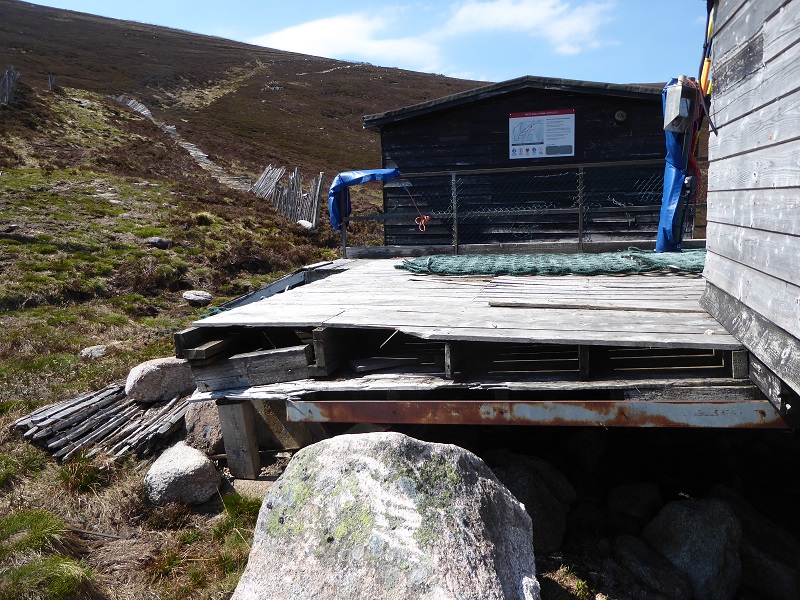
After the record temperatures in the Highlands it may seem strange to write about what’s happening to downhill skiing at Cairngorm and the impact on the local economy but its all related to the current planning applications at Cairngorm. The first, the application to install a dry ski slope above the Coire Cas carpark (see here) and the second, the long awaited planning application (see here) for the Ptarmigan which was called in by the Cairngorms National Park Authority on 14th May (and which I will consider in detail in a a later post).
Officially everything is fine and dandy at Cairngorm after the last ski season:
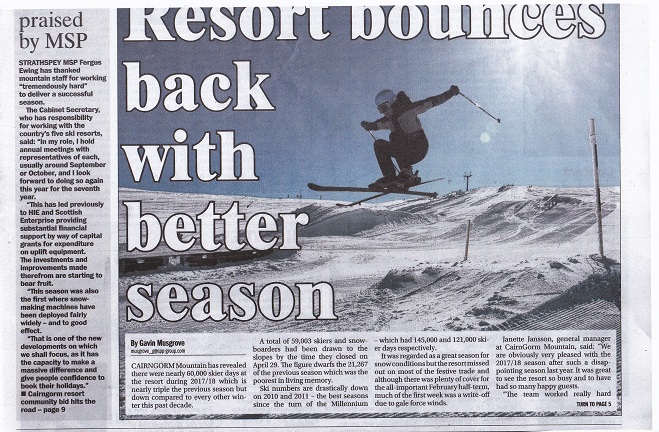
Having been instrumental first in securing a snow making machine and second in HIE’s purchase of road clearing equipment, Fergus Ewing probably had no choice but to claim the ski season at Cairngorm had been a success. On the ground, the lack of staff and queues (see here) told a different story.
To understand what is really going on you need to consider the downhill ski statistics for the last 15 years:
| CairnGorm | Glenshee | Lecht | Nevis | Glencoe | Totals | |||||||
| Numbers | % market | Numbers | % market | Numbers | % market | Numbers | % market | Numbers | % market | Numbers | ||
| 2003/4 | 58,500 | 35.57% | 27,471 | 16.70% | 50,636 | 30.79% | 20,855 | 12.68% | 7,000 | 4.26% | 164,462 | |
| 2004/5 | 55,586 | 37.77% | 36,000 | 24.46% | 25,252 | 17.16% | 18,338 | 12.46% | 12,000 | 8.15% | 147,176 | |
| 2005/6 | 55,000 | 35.53% | 42,460 | 27.43% | 22,303 | 14.40% | 18,430 | 11.90% | 16,623 | 10.74% | 154,816 | |
| 2006/7 | 38,553 | 48.77% | 8,521 | 10.78% | 13,200 | 16.70% | 11,149 | 14.10% | 7,623 | 9.65% | 79,046 | |
| 2007/8 | 62,000 | 37.55% | 39,007 | 23.63% | 18,061 | 10.94% | 23,021 | 13.94% | 23,000 | 13.94% | 165,089 | |
| 2008/9 | 65,000 | 40.66% | 43,000 | 26.89% | 19,110 | 11.95% | 15,876 | 9.93% | 16,899 | 10.57% | 159,885 | |
| 2009/10 | 145,000 | 38.72% | 116,614 | 31.13% | 52,147 | 13.92% | 34,686 | 9.26% | 26,135 | 6.97% | 374,582 | |
| 2010/11 | 121,000 | 41.80% | 95,571 | 33.00% | 40,678 | 14.04% | 18,289 | 6.32% | 14,037 | 4.84% | 289,575 | |
| 2011/12 | 66,463 | 50.48% | 33,947 | 25.78% | 10,856 | 8.25% | 9,788 | 7.43% | 10,614 | 8.06% | 131,668 | |
| 2012/13 | 113,000 | 38.83% | 92,899 | 31.92% | 44,429 | 15.27% | 16,668 | 5.73% | 24,000 | 8.25% | 290,996 | |
| 2013/14 | 77,430 | 32.92% | 84,397 | 35.88% | 16,075 | 6.84% | 25,711 | 10.93% | 31,578 | 13.43% | 235,191 | |
| 2014/15 | 76,588 | 33.21% | 58,407 | 25.60% | 31,218 | 13.39% | 29,375 | 12.60% | 35,046 | 15.20% | 230,634 | |
| 2015/16 | 67,000 | 32.29% | 59,126 | 28.49% | 25,156 | 12.12% | 26,760 | 12.89% | 29,488 | 14.21% | 207,530 | |
| 2016/17 | 21,267 | 39.63% | 12,111 | 22.57% | 4,002 | 7.45% | 10,348 | 19.28% | 5,941 | 11.07% | 53,669 | |
| 2017/18 | 59,003 | 23.62% | 76,367 | 30.57% | 40,047 | 16.02% | 33,000 | 13.21% | 41,431 | 16.58% | 249,848 | |
| 1,081,390 | 825,898 | 413,170 | 312,294 | 301,415 | 2,934,167 | |||||||
Cairngorm used to be the largest and most important centre for downhill skiing in Scotland and over the last fifteen years has still counted more ski days than anywhere else. This year, however, it recorded its smallest market share ever and was overtaken by Glen Shee for the second time in five years, something that had never happened until 2013/4. Meantime, Glen Coe, recorded its BEST season ever.
While 59,003 skiers may have been a significant increase from last year, that was exceptionally poor for snow. In historical terms, Cairngorm has not attracted fewer skiers since 2006/07 and the figure is way below the number of skiers who visited in the past with all the consequences that has for the economy on Speyside. So what is going on?
Highland and Island’s Enterprise and Natural Retreats’ explanation for this drop in ski numbers has been to blame the wind and the snow. Snow did block the ski road on occasions but this does not explain why in the past, when there was far more snow than now, Cairngorm used to be kept open. Indeed it was partly because Cairngorm received large amounts of snow that it did better than anywhere else in the past.
What the statistics show is that since HIE decided to outsource Cairngorm – in 2013/14 – the numbers of skiers and market share at Cairngorm has dropped significantly. The exception, in 2016/17 when Cairngorm’s market share approached historical levels, is explained by the altitude of the runs in the Ptarmigan bowl which give Cairngorm a relative advantage in very poor snow years.
A much convincing explanation lies in how Cairngorm is being managed by HIE:
- The outsourcing of ski operations to Natural Retreats, a company that has no expertise in managing ski resorts or land in sensitive protected areas, has not been a success and customer service has generally been poor. As a result, skiers have voted with their feet.
- A historical lack of investment in downhill ski infrastructure has resulted in many of the lifts which used to exist at Cairngorm falling into disuse and the consequence is that the other ski centres in Scotland offer a better range of skiing when they have snow.
- Investment has been in the wrong things, starting with the funicular – which was not good for skiers – and more recently the Shieling Rope tow which is in the wrong place (it had little use this year).
Investment in infrastructure at Cairngorm
My thanks to George Paton who obtained the figures below on investment at Cairngorm through an FOI request to HIE and shared them with Parkswatch
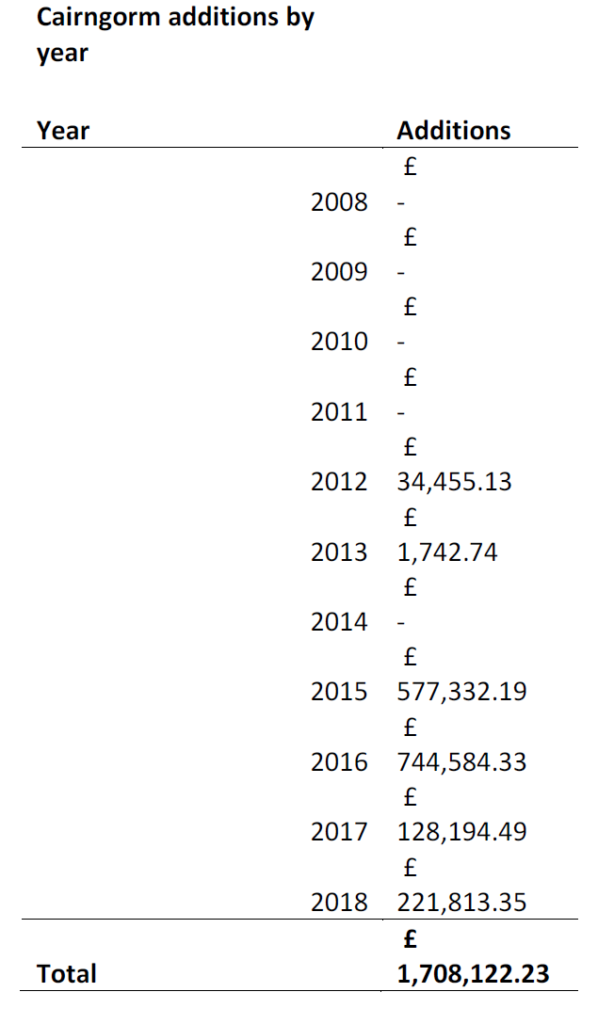
The figures show that there was almost NO investment by HIE in the assets it – and the public – own at Cairngorm until Natural Retreats were awarded the contract to run the place in 2014. Since Cairngorm had been outsourced to private interests, the levels of public money invested have soared and there is far more promised with £1.5m committed to the Coire Cas dry ski slope and £2.5m to the Ptarmigan redevelopment. In whose interest is this?
A high proportion of the money HIE has spent so far in the four years since Natural Retreats took over is ostensibly related to skiing. However much of this has been driven by HIE’s contractual obligations to Natural Retreats to maintain the ski infrastructure in a fit state and by Health and Safety requirements: hence the emergency repairs to the Cas Gantry and various electrical works. Apart from the Shieling rope tow, HIE has been removing old ski infrastructure rather than replacing it.
While HIE has now commissioned a review of ski infrastructure at Cairngorm (see here), it had previously agreed to finance two new developments at Cairngorm, without any masterplan and without any reference to what further investment might be needed at Cairngorm to maintain what remains of the delapidated skiing infrastructure. The need for more investment in ski infrastructure was only too obvious at the West Wall poma uplift in Coire na Ciste on Saturday (see top photo too). While a new electrical motor has been installed, as part of electrical renewal works, the gantry is in a terrible state of disrepair:
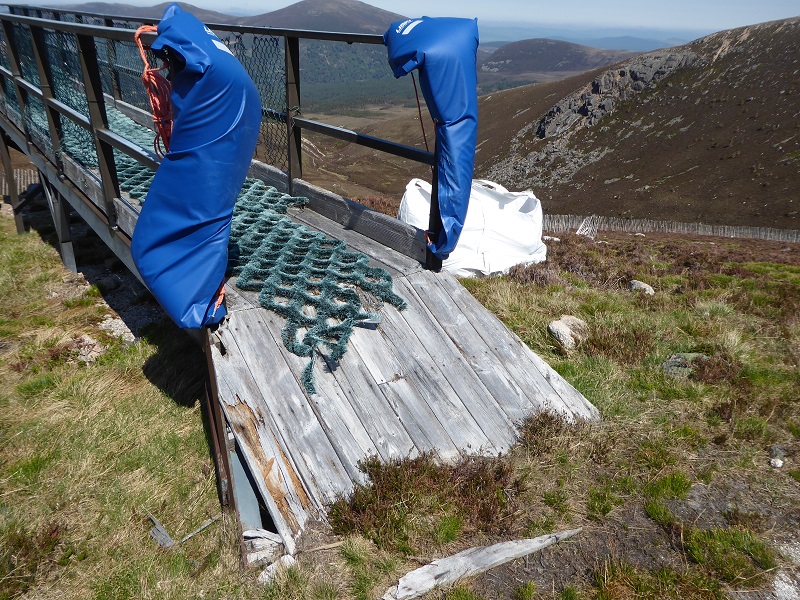
The health and safety risks are obvious and how the West Wall Poma was allowed to operate last winter I am not clear. One wonders if Natural Retreats ever submitted health and safety reports on this to HIE?
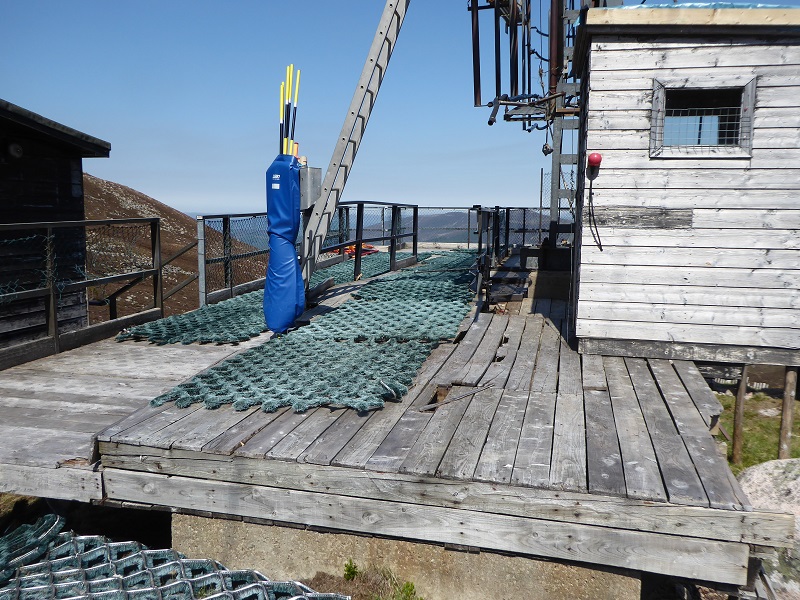
Even if they didn’t, HIE directly managed the removal of the ski infrastructure in Coire na Ciste and, had they supervised this, the dangerous state of the gantry would have been obvious. The organisation that accepted with question that the old lift towers in Coire na Ciste needed removal because of the poor state of the concrete plinths was blind apparently to the state of the West Wall poma.
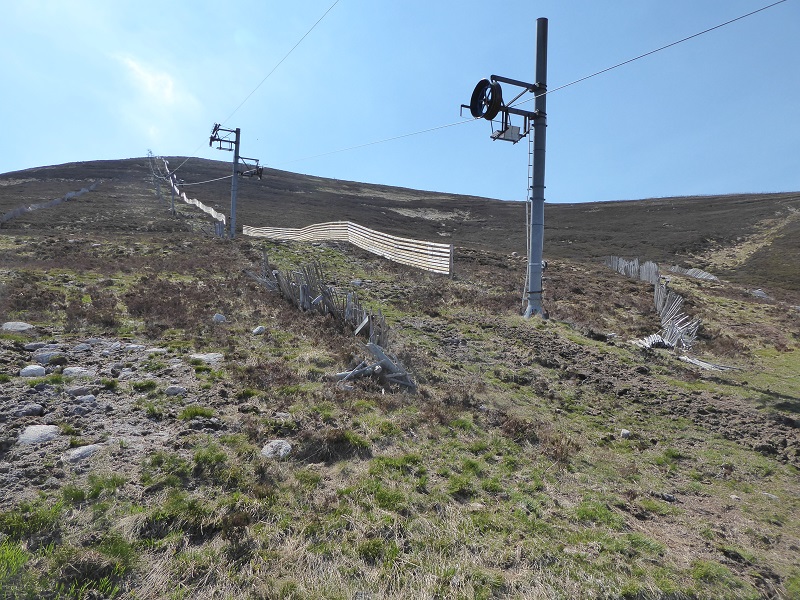
Its not difficult to predict what is going to happen. Either HIE will be forced to fork out public money on emergency repairs or the West Wall poma will go the way of the other three lifts in Coire na Ciste and end up being removed.
The economic case for the dry ski slope
In a rational world all new developments at Cairngorm would be halted until there is a proper master plan – promised but never delivered – which sets out plans for the existing infrastructure and protection of the natural environment as well as potential new developments. From a financial perspective it is hard to understand why HIE is proposing to lend “Natural Retreats” £1.5m to build a dry ski slope when it has NO plan to invest in existing ski infrastructure and no idea, apparently, what it will cost to bring this up to a safe and acceptable state.
Since I last posted on the dry ski slope at Coire Cas, Natural Retreats has been busy encouraging people to write in in support of the proposal and, by the end of April, 32 supporters outnumbered 21 objectors. Most letters of support are based on a belief that a dry ski slope will bring economic benefit and extend the ski season. The evidence shows that both of these beliefs, which also appear shared by HIE, are wrong. First consider the business case quoted in the application supporting statement:
• Having prepared a sensitised business model to support the commercial rationale for an artificial slope, the operation proved viable operating just 960 hours per annum, at less than 30% of total user capacity.
• At maturity, this equates to a combination of approximately 7,000 beginners and intermediate skiers and snowboarders taking lessons using the artificial slope.
7,000 lessons, even if charged as much as a full day ski pass, will do hardly anything to compensate for the drop in ski numbers shown in the statistics quoted above and will have little impact on the economy of Speyside. Indeed, since most of the users of the dry ski slope are predicted in summer, they would almost certainly come from existing summer visitors and therefore not add anything to the local economy. HIE would be much better investing in proper new ski lifts to attract people in winter.
Second, the evidence from elsewhere is that people are not attracted to artificial ski slopes in summer to learn to ski. The Lecht used to have an artificial slope but that has now gone while that in Glen Coe is used for people wanting to maintain skills – and highly motivated – rather than beginners. There is also anecdotal evidence that artificial ski slopes in North American ski resorts have closed: having commissioned a North American firm of consultants to report on ski infrastructure at Cairngorm, there is no excuse for HIE not being informed about what the evidence from North America shows about the likely success of this proposal. To proceed with the planning application until they have this evidence and have made it public is reckless.
Its clear that in responding to the challenges of warmer winters, ski resorts across the world have had to diversify but its into activities that depend on the natural environment – like mountain biking – not into the type of proposals HIE is punting at Cairngorm.
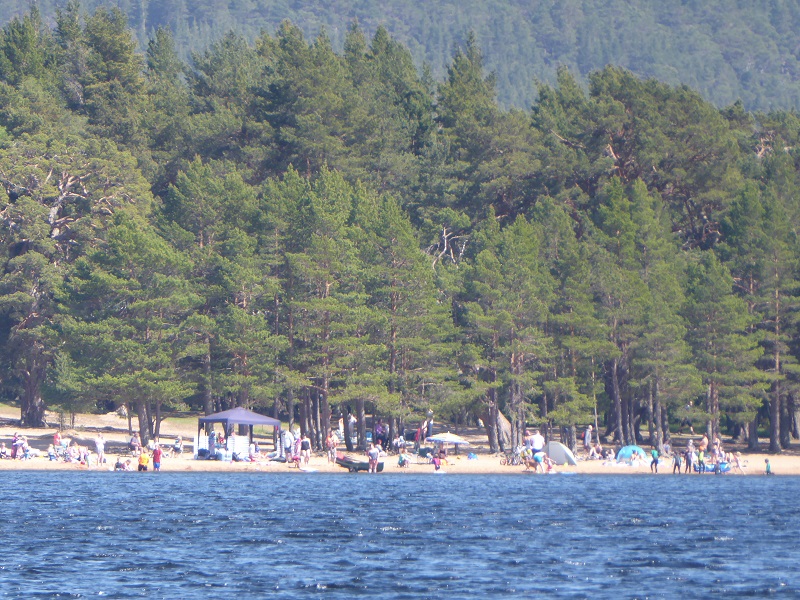
On a sunny day, like last weekend, its pretty obvious most people will vote to enjoy the outdoors – for free! – rather than to take the funicular to be confined to the Ptarmigan restaurant or take lessons on a ski carpet above a carpark.

The excellent article in the Strathy earlier this months illustrates how this disaster has been allowed to develop. As long as HIE is funding everything, there is no risk to Natural Retreats coming up with any old proposal, and they appear to have been given a free hand to spend what they want: how else do you explain HIE’s commitment of £1.5m to an artificial ski slope based on a quote from snowflex when an alternative manufacturer could apparently do it for half the price and a better specification?
This adds to the argument that there would be far less risk and far greater potential benefit to the Speyside economy if the HIE were to invest its £1.5m in downhill ski infrastructure rather than an artificial ski slope.
The planning application for the dry ski slope
The Cairngorms National Park Authority, while it needs to determine the application for the dry ski slope on planning grounds, will also take the alleged economic impact into account. I hope this post has demonstrated that there is at present NO good economic evidence to justify this proposal going ahead and that the CNPA should be free to determine the development on its landscape impact.
The CNPA landscape adviser submitted an excellent report (see here) on the landscape impact of the proposed development which concludes:
“It is clear that the proposed development would create a new feature that strongly contrasts with the current landscape features of the site. The development will have significant adverse landscape and visual effects and will not compliment or enhance the landscape character or special landscape qualities of the site and its surroundings.”
That should be sufficient for the CNPA Planning Committee , which has a duty to protect the landscape of the National Park and Cairngorms National Scenic Area, to reject this proposal. It would help, however, if more organisations and individuals objected (you can do so here) on grounds of the landscape impact while noting the development is unlikely to bring any of the claimed economic benefits.

I fundamentally don’t understand why you’d put a dry ski slope in the Highlands, rather than near a centre of population, if you wanted to maximise your business case. If there isn’t snow, what is attracting a skier to travel all that way? If (e.g. as at Hillend) it’s next to an attractive city, then you’d want to go there instead, wouldn’t you? Seems a little obvious – am I missing something? Of course for “Natural Retreats” the answer to any question is “do it in the Cairngorms”, but what is HIE’s excuse? Did their business case compare investing that money in a dry ski slope somewhere else – the obvious place to spend that money (if you must) would either be an upgraded Hillend or a much upgraded Glasgow Ski Centre. I can’t believe that the knock-on income to local businesses wouldn’t have been much larger.
Conversely, if the aim was to re-generate a rural area, I can think of much more varied and intelligent ways to spend that money…
Cairngorms Connect is doing an excellent job in linking up all the forest regeneration projects in the area, I agree that the ski infrastructure should be removed and more planting of trees done higher up into the hills.
On a related note, being on holiday here and developing a sore knee, I tried to find information on easy to access wildlife hides so that I could sit and observe. Apart from the RSPB hides there is very little available. More are needed for the older generation and also to encourage children and the next generation of conservationists. With BBC Springwatch based in the area, it is bound to bring in more ecotourism.
There is potential for wildlife hides at Cairn Gorm – one of best places to see Ring Ouzel, for example, in Scotland